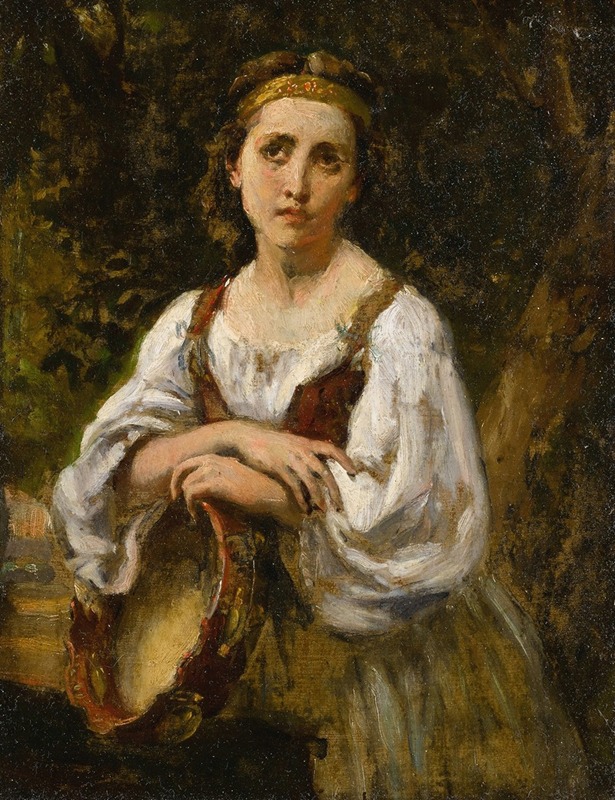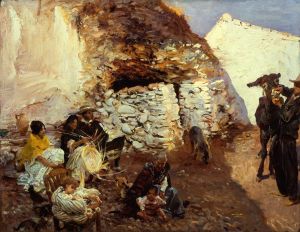
Bohémienne au tambour
A hand-painted replica of Narcisse-Virgile Diaz de La Peña’s masterpiece Bohémienne au tambour, meticulously crafted by professional artists to capture the true essence of the original. Each piece is created with museum-quality canvas and rare mineral pigments, carefully painted by experienced artists with delicate brushstrokes and rich, layered colors to perfectly recreate the texture of the original artwork. Unlike machine-printed reproductions, this hand-painted version brings the painting to life, infused with the artist’s emotions and skill in every stroke. Whether for personal collection or home decoration, it instantly elevates the artistic atmosphere of any space.
Narcisse-Virgile Diaz de la Peña was a prominent 19th-century French painter associated with the Barbizon School, a movement that emphasized naturalism and was a precursor to Impressionism. One of his notable works is "Bohémienne au tambour," which translates to "Gypsy with a Tambourine." This painting exemplifies Diaz de la Peña's interest in romantic and exotic subjects, a common theme in his oeuvre.
"Bohémienne au tambour" is characterized by its vibrant use of color and dynamic composition, hallmarks of Diaz de la Peña's style. The painting depicts a young Romani woman, often referred to as a "gypsy" in 19th-century European art, playing a tambourine. This subject matter reflects the Romantic fascination with the "exotic" and "other," which was prevalent during the period. The Romani people were often romanticized in art and literature as free-spirited and mysterious, and Diaz de la Peña's work captures this sentiment.
The painting is notable for its rich palette and the way Diaz de la Peña captures light and texture. His use of color is particularly striking, with warm tones that bring the subject to life. The brushwork is fluid and expressive, contributing to the overall sense of movement and rhythm in the painting. This technique is consistent with the Barbizon School's focus on capturing the natural world with immediacy and emotion.
Diaz de la Peña's background as a painter of landscapes and figures is evident in "Bohémienne au tambour." Although he is primarily known for his landscapes, his figure paintings, such as this one, demonstrate his ability to convey character and emotion. The artist's skill in rendering the human form and his attention to detail are apparent in the delicate features and expressive posture of the woman.
The cultural context of the painting is also significant. During the 19th century, there was a growing interest in the depiction of marginalized groups in art, often through a romanticized lens. While these portrayals can be problematic by today's standards, they reflect the attitudes and interests of the time. Diaz de la Peña's "Bohémienne au tambour" fits within this broader trend, offering insight into how Romani people were viewed and represented in 19th-century France.
Diaz de la Peña's work, including "Bohémienne au tambour," has been exhibited in various galleries and museums, contributing to his reputation as a key figure in the Barbizon School. His paintings are appreciated for their beauty and technical skill, as well as their ability to evoke emotion and tell a story. "Bohémienne au tambour" remains an example of his talent in capturing both the physical and emotional essence of his subjects.
Overall, "Bohémienne au tambour" is a testament to Narcisse-Virgile Diaz de la Peña's artistic vision and his contribution to 19th-century French art. Through his use of color, composition, and subject matter, Diaz de la Peña created a work that continues to be studied and admired for its artistic and historical significance.


















